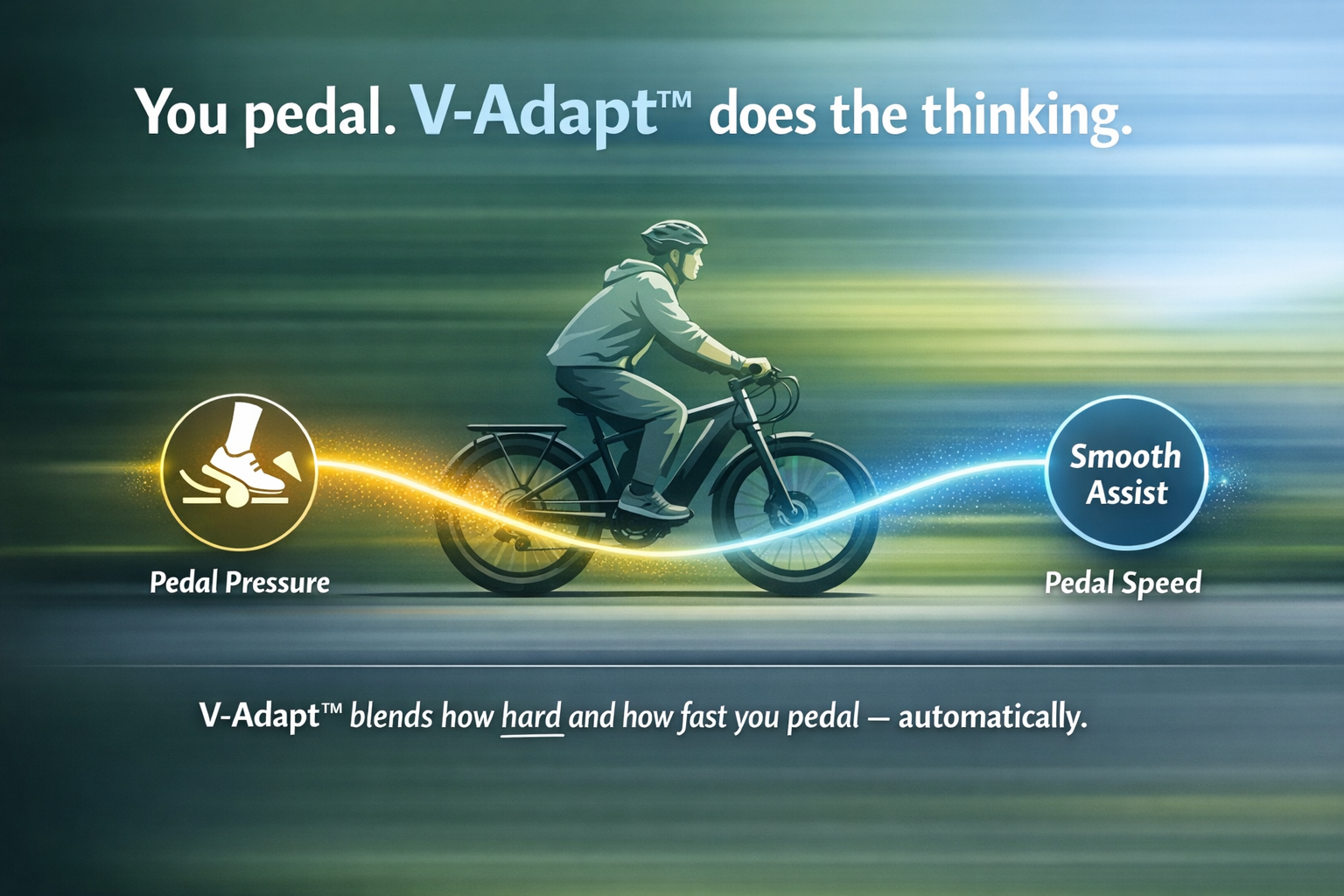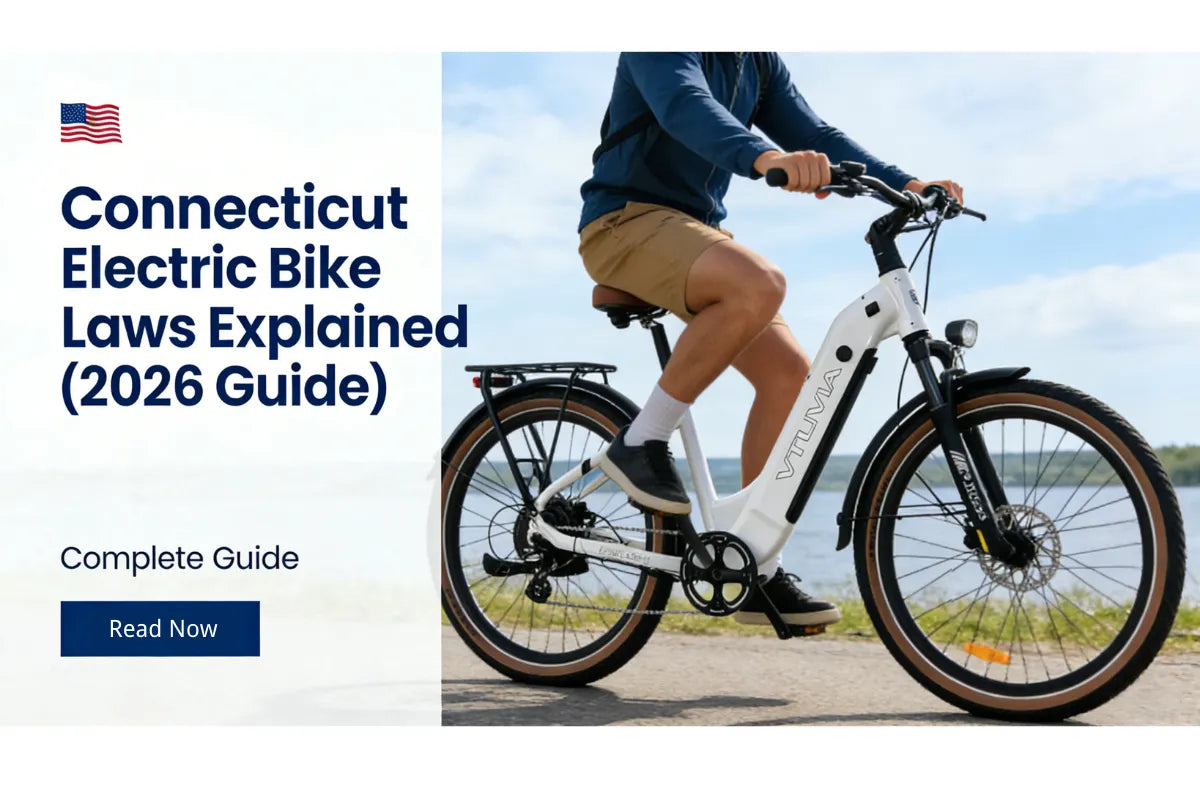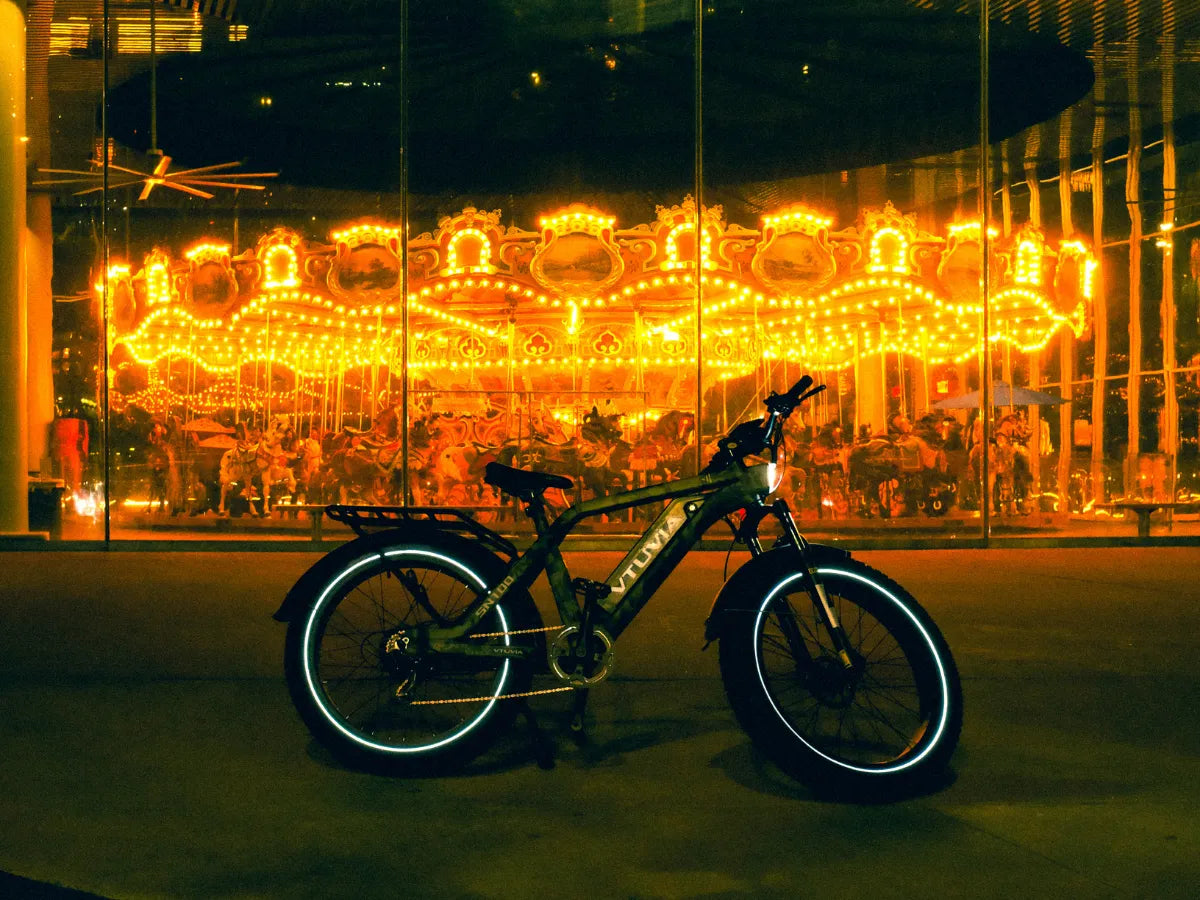Subtitle: From motors and batteries to laws, maintenance, and range — everything you need to understand your electric bike inside out.
Quick Answer — The One-Page Summary
Electric bikes work by combining your pedaling power with assistance from an electric motor powered by a rechargeable battery. The motor’s output is managed by a controller that responds to your pedaling effort or throttle input.
- Motor type & power determine acceleration and climbing ability.
- Battery capacity controls range and energy supply.
- Controller & sensors decide how smoothly assistance is delivered.
Key Terms & Quick Definitions
- Motor: Converts electrical energy into motion; can be hub or mid-drive (250–750W typical).
- Battery: Stores power (measured in Wh); larger Wh = longer range.
- Controller: The “brain” regulating current and motor output.
- Sensors: Measure pedal cadence or torque to control assistance.
- Pedal Assist vs Throttle: Determines how motor engagement works.
- Class 1 / 2 / 3: Defines legal speed and throttle rules in the U.S.
- BMS: Battery Management System for safety and longevity.
Anatomy of an Electric Bike — Components & How They Work
The Motor — Types, Mechanics & Tradeoffs
- Hub Motors: Simpler design, lower maintenance, direct wheel drive. Great for commuting.
- Mid-Drive Motors: Use bike gears for torque efficiency; ideal for hills and off-road.
- Control Logic: Field Oriented Control (FOC) for smooth torque delivery.
The Battery — Chemistry, Range & Lifespan
- Chemistry: Lithium-ion (NMC or LFP) dominates modern e-bikes.
- Range Formula: Range (mi) = Battery Wh / Energy use (Wh/mi).
- Charging Cycles: 500–1500 typical; 80% capacity after ~3 years.
- Recycling: Mention battery take-back programs and lifecycle impact.
The Controller & Sensors — The Electronic Brain
- Processes signals from pedals, throttle, and display to control motor.
- Cadence Sensors: On/off feel.
- Torque Sensors: Smooth, proportional power delivery.
- Modern controllers integrate Bluetooth & mobile apps.
Drivetrain, Brakes & Mechanical Systems
- Brakes: Mechanical vs hydraulic — critical for higher e-bike speeds.
- Gears: Mid-drive motors benefit from multiple speeds for hills.
- Frame Strength: Reinforced tubing and fork safety standards.
How an Electric Bike Operates — Step-by-Step
- Rider pedals or uses throttle.
- Sensors detect motion or torque.
- Controller calculates how much power to add.
- Motor converts that power to motion.
- System adjusts assistance dynamically.
Classes, Standards & Legal Context
Classification Systems (U.S. vs EU)
| Class | Assist Type | Top Speed | Throttle Allowed? |
|---|---|---|---|
| Class 1 | Pedal assist only | 20 mph | No |
| Class 2 | Pedal or throttle | 20 mph | Yes |
| Class 3 | Pedal assist only | 28 mph | No |
EU regulation: 250W max motor power and 25 km/h top assist speed.
How Specs Affect Legality
Exceeding wattage or speed limits can reclassify your e-bike as a moped or motorcycle, requiring registration and insurance.
Performance, Range & Real-World Metrics
- Range depends on assist level, terrain, and rider weight.
- Typical consumption: 10–30 Wh/mi.
- Use online calculators to estimate your personal range.
- Battery degradation: Expect ~15% drop after 500 cycles.
Maintenance, Troubleshooting & Safety
Routine Maintenance Checklist
- Monthly: Tire pressure, brakes, chain lube.
- Quarterly: Bolt torque, firmware updates.
- Annually: Battery health check, drivetrain service.
Common Problems & Fixes
- Motor doesn’t start → check connectors and display settings.
- Range dropped → recalibrate battery, check tires and assist level.
- Controller error codes → refer to manufacturer chart.
Safety Tips
- Wear a helmet and gloves.
- Always check brakes and lights before riding.
- Keep battery dry and clean connectors regularly.
Advanced Topics
Regenerative Braking — Reality vs Hype
Only a few percent of energy can be recovered due to low bike mass; still useful on long descents.
Battery Management & Recycling
BMS monitors voltage, temperature, and cell balance for safety. Learn where to recycle batteries responsibly.
Firmware, Tuning & Legal Risk
Altering firmware to bypass speed limits may void warranty and violate traffic laws.
Smart Features & Connectivity
- GPS tracking, anti-theft alerts, and app-based range estimates.
- Data privacy and firmware security considerations.
Fleet & Commercial Uses
Delivery and rental fleets use geo-fencing and strict maintenance cycles for safety and uptime.
Buying Guide — How to Choose the Right Electric Bike
Choosing by Use Case
- Commuter: Lightweight, midrange Wh battery.
- Hills/Cargo: Mid-drive, high torque motor.
- Off-Road: Durable suspension, torque sensor.
Pre-Purchase Checklist
- Check wattage label, warranty, and local compliance.
- Test ride for comfort and assist feel.
- Ensure service availability and parts support.
Buying Used
Inspect battery health, controller firmware version, and frame condition.
Myths & Misconceptions — Debunked
-
Myth: “E-bikes provide no exercise.”
Reality: Studies show riders pedal more often and longer distances. -
Myth: “They’re unsafe.”
Reality: Risk per mile is comparable to traditional bikes. -
Myth: “They’re just scooters.”
Reality: E-bikes still rely on pedal input and bike mechanics.
Environmental Impact — Are E-Bikes Really Green?
- Manufacturing footprint is offset after ~500 miles compared to car trips.
- Encourage proper recycling of lithium batteries.
- Highlight city subsidy examples and climate benefits.
Interactive Tools & Extras
- Range calculator widget (inputs: rider weight, battery Wh, terrain).
- Motor vs use-case comparison table.
- Downloadable maintenance checklist.
Frequently Asked Questions
- Do I need a license for my electric bike?
- How far can I ride on one charge?
- Can I ride in the rain?
- Is tuning my e-bike illegal?
- How do I extend battery life?
Conclusion — Key Takeaways
Electric bikes combine simplicity and innovation. Understanding their systems helps you ride safer, go farther, and enjoy more freedom. Keep learning, maintain regularly, and respect local laws to make the most of your e-bike journey.
CTA: Explore the full range of VTUVIA Electric Bikes and find the perfect model for your ride.





Share:
Electric Bike Regulations 2025: License, Speed Limits, and Class Laws Explained
VTUVIA Zeal XT8 Review – Best Step-Through Long Range Electric Bike of 2025